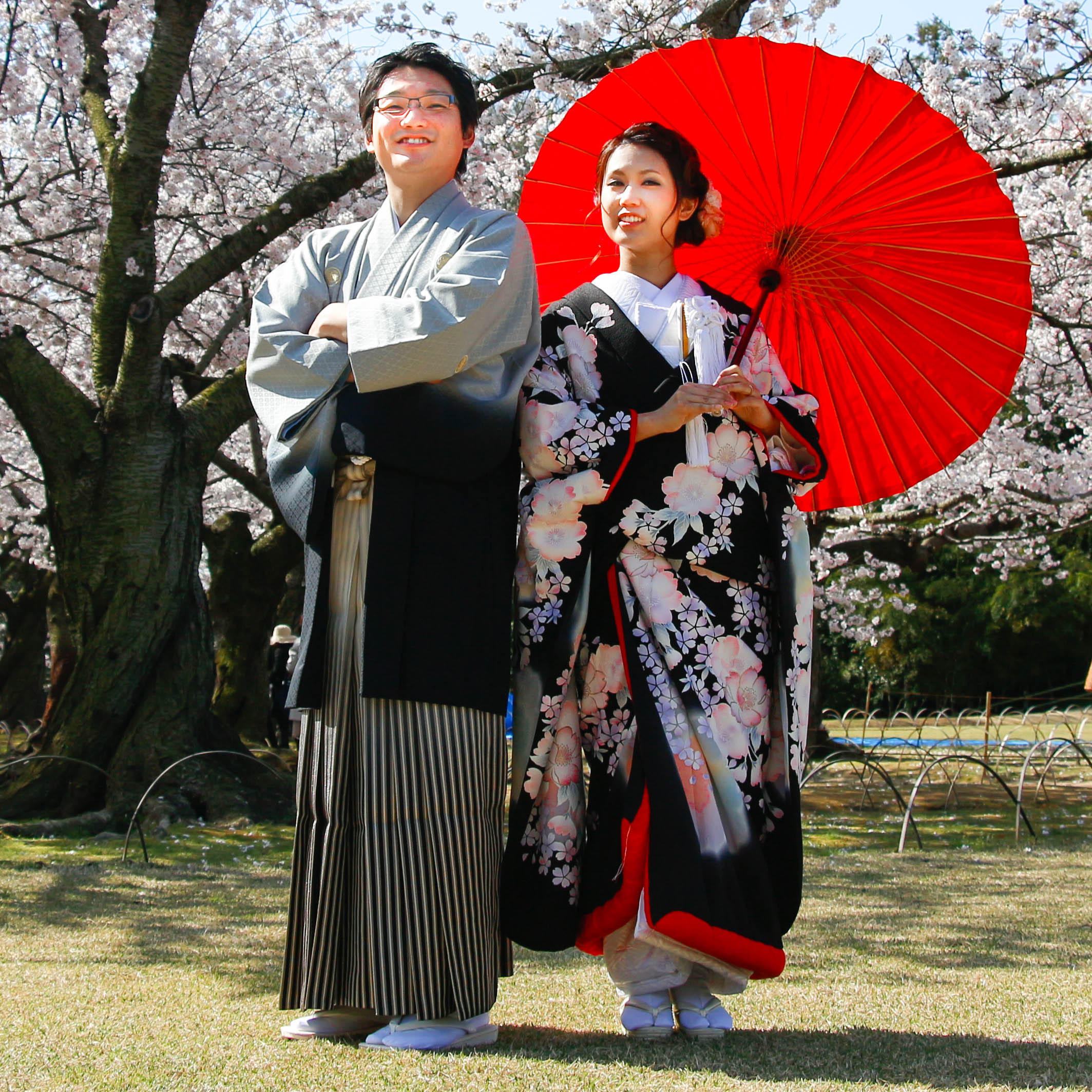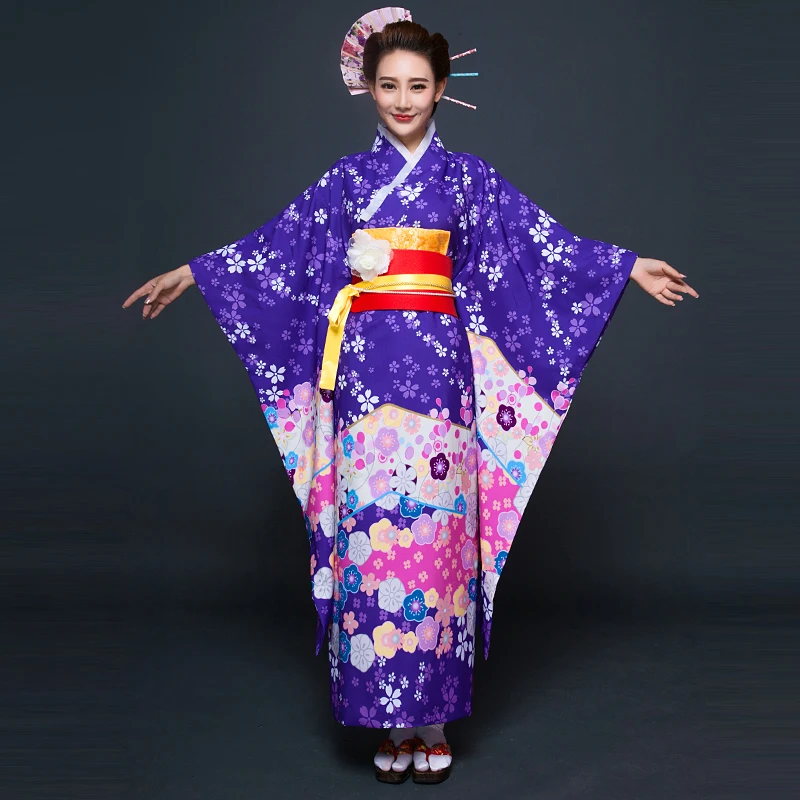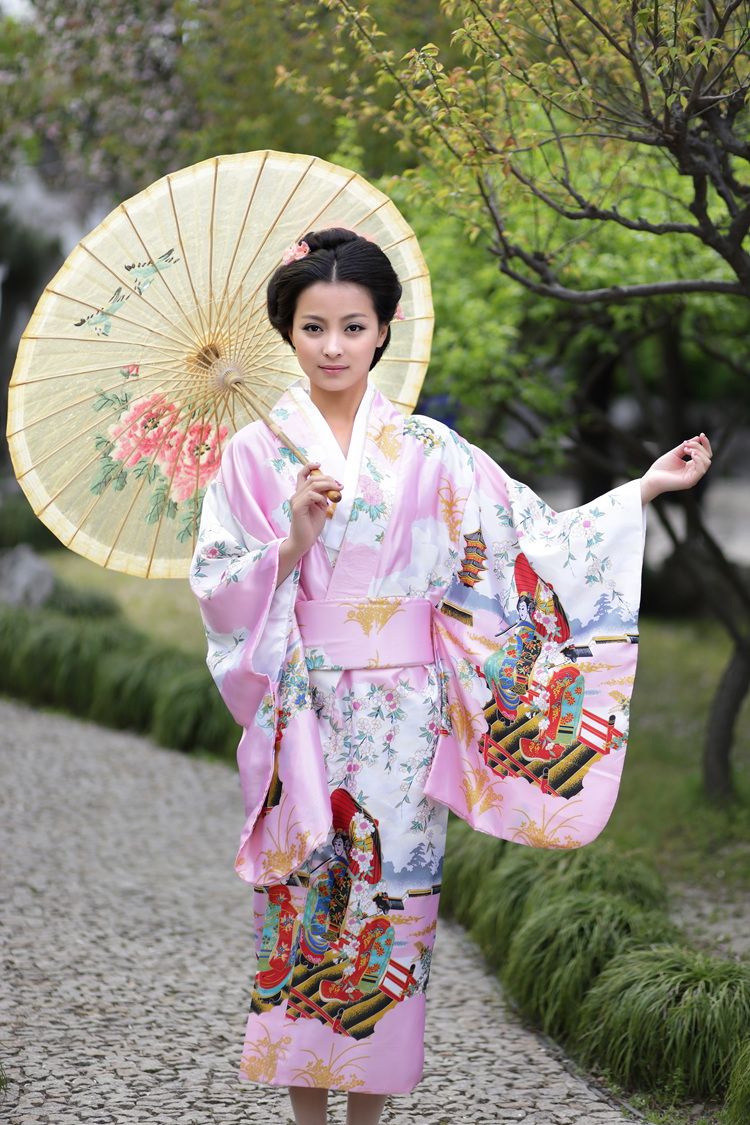
"KIMONO" (japanese traditional dress) MODE
Japanese Traditional Dress and Adornment. Japan, an archipelago consisting of four principal islands situated off the east coast of the Asian mainland, was a relative latecomer in terms of both receiving from the outside and nurturing at home a rich and sophisticated material culture. Whereas ample archaeological evidence exists in China of.

2018 summer japanese traditional cotton clothing kawaii japan yukata
Dress - Japanese Kimono, Yukata, Haori: The earliest representations of dress styles in Japan are to be found in 3rd- to 5th-century ce clay grave figures (haniwa), a few of which show men and women wearing meticulously detailed two-piece costumes consisting of crossed-front jackets that flare out over the hips, the men's worn over full trousers, which, banded above the knees, hang straight.

japanesecoupleintraditionaldress image Free stock photo Public
Kimonos are traditionally worn by men and women.The ones worn by men are more austere and simple, and usually of dark colors; whereas women's kimonos can be brightly colored, and they come in many different pieces that make wearing this garment an art in itself. Read our short article and learn more about this stunning garment! Highlights

Buy Traditional Japanese Floral Kimono with belt
Traditional Japanese clothing is known for its focus on traditional art. Since Japanese culture and its Shinto religion involves a deep respect for nature, natural symbols like waves and animals are incorporated into designs. Aside from traditional clothing, people, especially the younger generations, wear Westernized clothing in casual.

Kimono Japanese traditional dress, Beautiful japanese women, Japanese
The kimono is the most famous and widespread traditional clothing in Japan. It rose to prominence in the Heian period (AD 794-1193) and has survived as the main dress for both men and women ever since—a whopping 1,000 years. Kimono were so accepted as the main form of fashion that the name, kimono, literally means "thing to wear.".

Peacock Flower Japanese Traditional Costume Kimono for Women Kimono
There are typically two types of clothing worn in Japan: traditional clothing known as Japanese clothing (和服, wafuku), including the national dress of Japan, the kimono, and Western clothing (洋服, yōfuku), which encompasses all else not recognised as either national dress or the dress of another country.

Japanese Style Tea Ceremony Kimono Female Traditional Vintage Flower
A Michiyuki is a traditional Japanese coat worn by women. It is usually made of silk and has a long, flowing design. The coat is typically worn over a kimono, and the two garments are often tied together with an obi sash. The Michiyuki is a popular choice for special occasions such as weddings and tea ceremonies.
CAMIRTW Japanese People in Traditional Clothes
1. Happi Happi is a short, straight jacket with wide sleeves, usually worn over a kimono or yukata. Happi is often made of cotton and features bright patterns and colors, reflecting a festive and joyful spirit. Happi is traditionally associated with Japanese festivals (matsuri).

Pin on wedding/event ideas
33 Traditional Japanese Clothing You'll Want to Wear - Japan Objects Store Fashion · Tips & Advice · 21 comments · Jan 18, 2022 33 Traditional Japanese Clothing You'll Want to Wear SHOP THE LOOK | Vintage Silk Kimono 1. Kimono SHOP THE LOOK | Vintage Silk Kimono SHOP THE LOOK | Camellia Floral Yukata

kimono daisuki // Japanese fashion women, Japanese style
Zori. Zori are traditional sandals that look similar to geta, and can be made of rice straw, cloth, lacquered wood, leather, or rubber. Women's zori are always raised in the heel while men's zori are always flat. Some beautifully decorated women's zori are worn with kimono. Women's zori.

Buy High Quality Blue Japanese Women Kimono Dress
Kimono is a type of Japanese traditional wear. The name kimono can be divided into two whereby ki means to "wear" and mono means "thing or object". According to traditions, the art of Kimono was transferred from mother to daughter. Currently the art has been introduced in schools whereby the method is similar to that of the past.

The groom wears MONTSUKI and the bride wears UCHIKAKE. UCHIKAKE is a
Though the kimono is a decidedly Japanese form of dress, it is said that its roots are from China. The earliest form of kimono was worn as a type of undergarment, gaining popularity in Japan during the Muromachi period (1392-1573), when they began to be worn without hakama (traditional Japanese trousers), and paired with a sash called an obi.

Clothing Style For Women Japanese Clothing Style For Women
Uchikake and Shiromuku. Uchikake is used as a jacket over the Japanese bride's kimono on the wedding day. It's usually red and designed with floral motifs, lovebirds, and cranes. In Japanese mythology, cranes are thousand-year-old creatures that symbolize longevity, bringing luck to couples.

High Quality Purple Japanese Women Kimono Dress Traditional Yukata With
It was also greatly influenced by the design of Japanese homes.Traditional Japanese fashions that are still worn today include: 1. Kimono. Kimono was once worn on a daily basis by most Japanese people. In modern times, it's formal wear that's appropriate for a wide range of occasions. 2.

JAPANESE TRADITIONAL CULTURAL DRESS
Kimono, yukata, haori, geta. They all reflect the Japanese elegance, so different from Western clothing. Knowing how to recognize these clothes will bring you a step closer to being a true Japan specialist! ⛩️ In this article, you will find out all the traditional Japanese clothing you should absolutely know about. 1.

2017 Cheap Japan Dresses Traditional Japanese Ethnic Dress Sexy Kimono
1. The kimono musumemiyuki, CC BY-SA 2.0, via Wikimedia Commons This is the most iconic garment of Japanese clothing. It is a long, loose-fitting robe that is tied with a sash called an obi. Kimono are typically made of silk or cotton, and they can be decorated with embroidery or other embellishments. The kimono has a long and complex history.